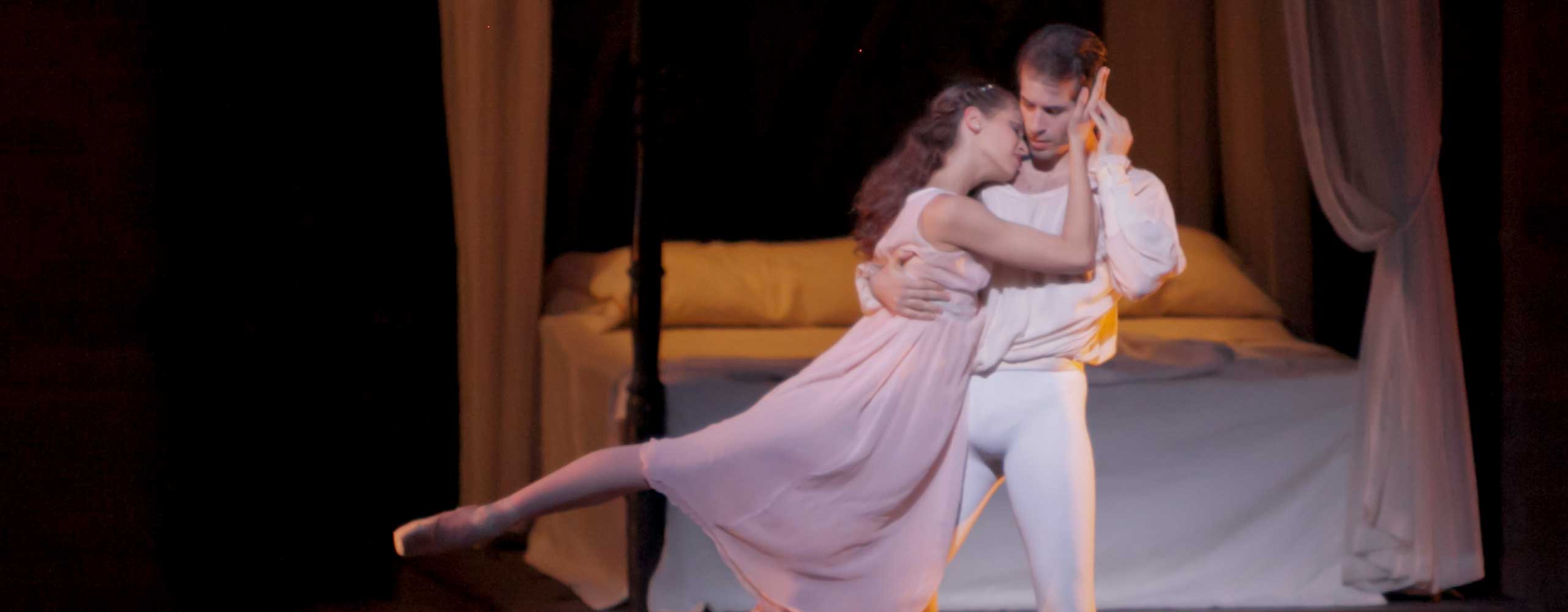For tickets to Devon Carney’s Romeo & Juliet premiering in October 2017, click here.

Choreography: Ib Andersen
Music: Sergei Prokofiev
The story of star-crossed lovers told in Shakespeare’s popular Romeo and Juliet has inspired music and dance for over 400 years. However, the beginning of the ballet classic began with Sergei Prokofiev’s ballet score written in 1935, soon after the composer’s return to the Soviet Union after several years in exile. When Leningrad’s Kirov Ballet approached Prokofiev about composing a full-length, lyrical work he eventually came up with the idea of setting Shakespeare’s tragedy, Romeo and Juliet. He knew this meant a real change from his former style. Prokofiev succeeded in producing a Tchaikovsky—like ballet with strong but intimate emotion appropriate to the tragic drama. His sensitive, imaginative figures and colorful scoring make this work a powerful statement worthy of its subject. Many today feel that it is the best of the many musical representations of the classic story.
The Kirov rejected the project in 1935, so the composer signed a contract with Moscow’s Bolshoi Ballet and completed the work—only to have it rejected again as too difficult. Both companies felt the story’s tragic ending made it unsuitable for dancing (“Dead people don’t dance, there’s no grand finale for the dancers” was the Moscow theatre manager’s position). The composer then fashioned two orchestral suites and some piano pieces from the score. He made no attempt to follow the dramatic action but rather arranged the pieces to be musically coherent. The suites retain the lighter, chamber- like scoring of the original 1935 ballet music. At last the ballet company in Brno, Czechoslovakia, premiered the complete work in 1938 with great success. Both the Kirov (1940) and the Bolshoi (1946) staged the ballet shortly thereafter, as the power of the musical score became apparent – and popular – throughout the world. For the 1940 Kirov production Prokofiev changed much of the scoring, making the rhythms more distinct to accommodate the acoustics of the Kirov Theatre; still later he made other additions and changes. Vania Psota choreographed the work for National Theatre’s 1938 premiere in Brno; Leonid Lavronsky created the choreography for The Kirov State Theatre of Opera and Ballet in Leningrad in 1940 and Frederick Ashton choreographed the work for The Royal Danish Ballet in 1955.
The ballet score is symphonic in scale and scope, weaving short dance pieces into larger narrative and musical units. The composer also uses an extensive scheme of musical motifs throughout the work to express character, mood, actions, etc. These motifs enable a story to be related musically without the use of words (e.g. the aggressive enmity motif immediately focuses the listener’s awareness on a hostile element—whether it is an action or a feeling). They also frequently serve as the basis for musical development of nuances of the topic (e.g. Juliet’s innocence ripening into young womanhood, the“street awakening” developing into the quarrel and fight, the incremental building of the sense of impending tragedy).
In recent decades, parts of the score have been excerpted to accompany passionate moments in movies and television commercials, making sections of the music wellknown to audiences far beyond the ballet or concert hall.
